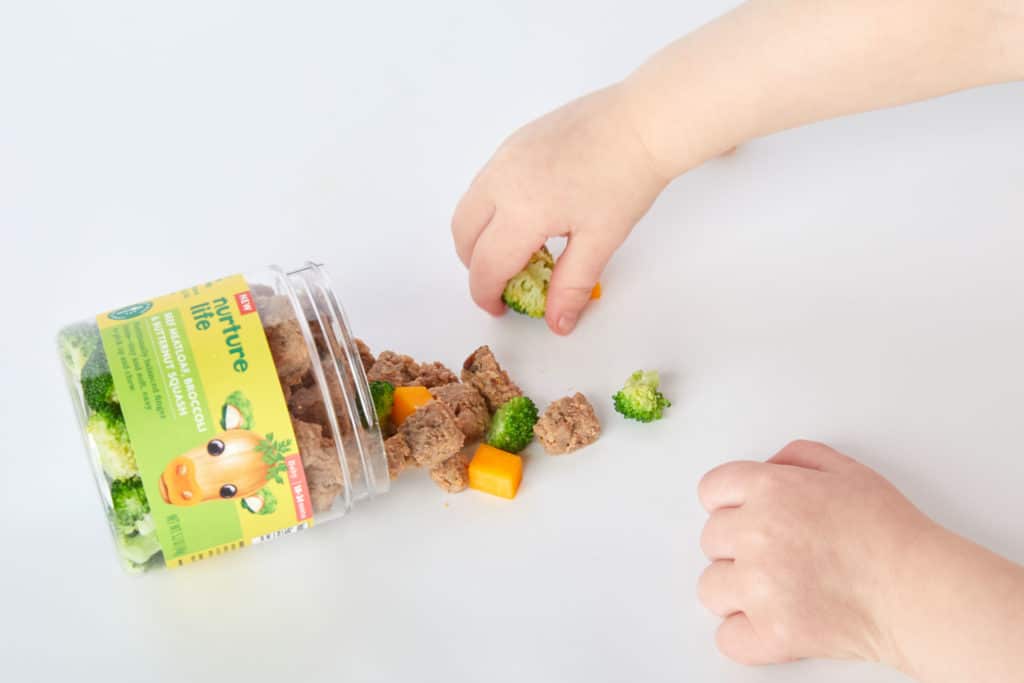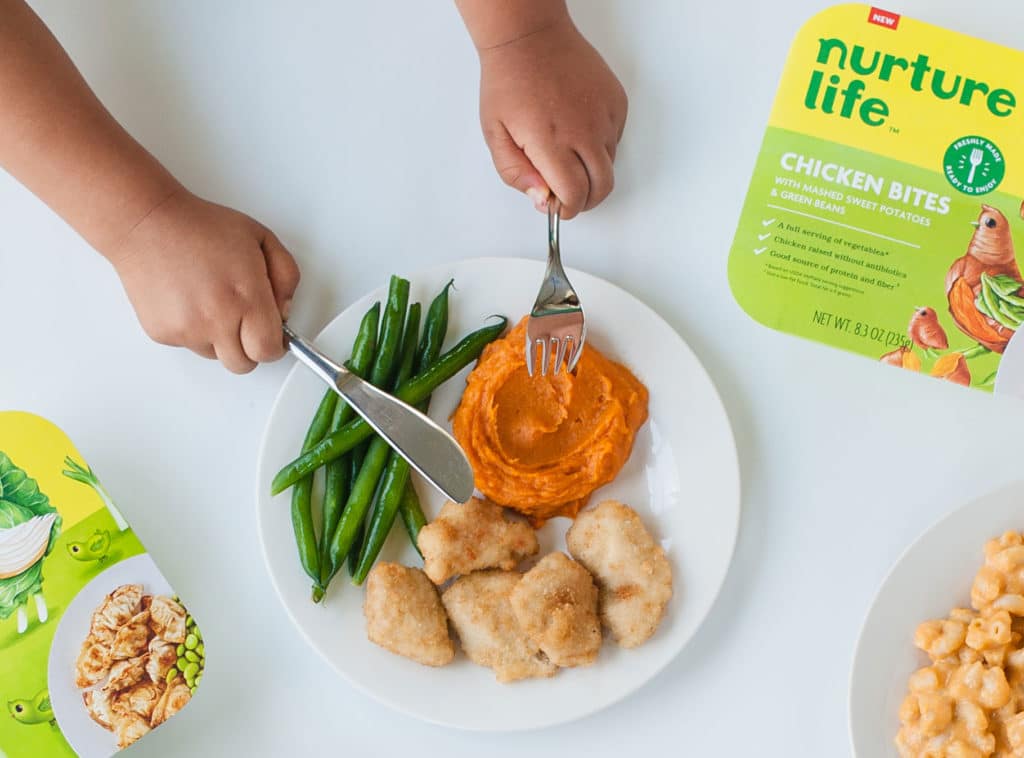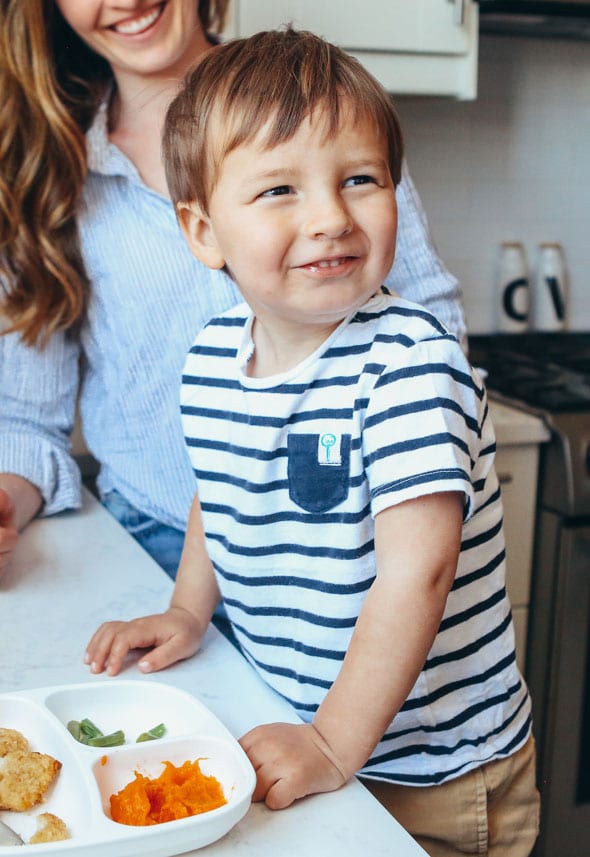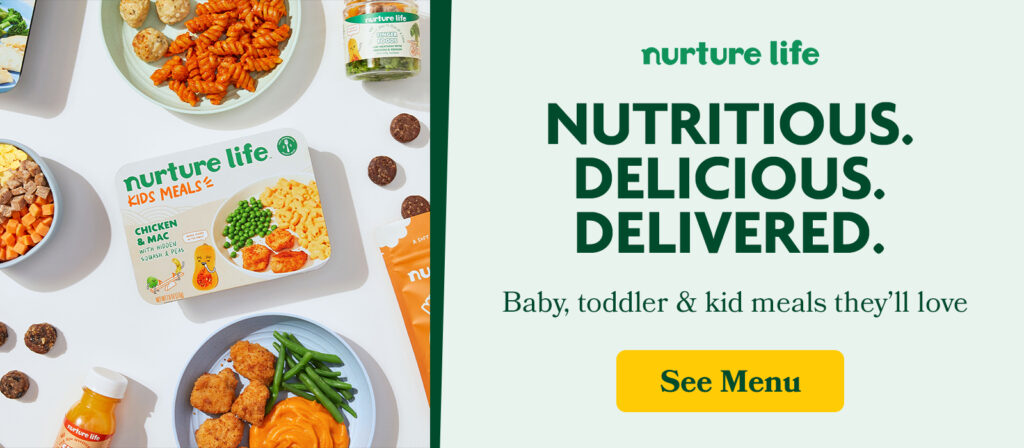How to Switch from Baby Food to Table Food
The first year of a baby’s life is all about change. As soon as you start to get into a groove, your little one is ready for something new!
In terms of diet, one major change is the transition from baby purees to finger foods (also known as “Stage 3 baby foods”). And then seemingly right after that, your baby will make another big change—this time from finger foods to “real” table foods, or what we at Nurture Life call “toddler meals.”
This post focuses on that second transition from baby food to table food. We’ll share a few helpful tips to ease the transition to toddler meals, including when to start and how to do so in a positive, healthy way.
When to Switch from Purees to Table Food
Many people consider finger foods to be a baby’s first real “table food,” so in that case, most babies start eating table food by 9 or 10 months of age. (For more information on the switch from purees to finger foods, check out our guide on transitioning to finger foods!)
The second table-food transition—from finger foods to toddler meals—has fewer obvious developmental cues, and may occur anywhere around or after 1 year of age.
So how will you know when it’s time to leave purees behind? Below we’ll look at a few possible cues.
4 Signs Your Baby May Be Ready for Table Foods
The transition from finger foods to toddler meals will be a gradual process. It won’t happen all at once, and there’s really no set timeline. Generally speaking, though, there are a few ways to tell whether your little one is ready to make the change from Stage 3 finger foods to larger, more “grown up” plates with more calorie-dense portions.
Here are 4 common signs it may be time:
1. Using utensils.
It’s never too early to supply your baby with utensils so that they understand that they are a part of mealtime. Model how to use spoons and forks and praise your child for trying—regardless of the inevitable mess that’s made! Offer a variety of utensils so they can practice with different sizes and styles.
2. Asking for more.
Even at this young age, kids understand words and know how to point. If your child has finished a portion of Stage 3 baby food but still feels hungry, she or he may point to food to ask for more. You can also ask, “Do you want more?” and gauge your child’s reaction.
Asking for more is an indication of hunger and means their body is probably ready for larger meals at a time.
3. Picking up food.
Picking up food is another way of asking for more. If your child continues to pick up food when you offer it, let them! Babies should not be restricted, and extended mealtimes or continued interest in food may be a sign that they need more calories.

4. Branching Out.
Your baby’s curiosity might be your best guide. If they’ve tried basic finger foods and seem ready for more diverse flavors and textures, it could be time to expand their palate with table foods!
5 Tips for Introducing Table Foods to Toddlers
If your child has begun to show a few of these signs, he or she may be ready to graduate to toddler meals. When that day comes, try out these five tips on how to switch from baby food to table food!

1. Start big.
When you’re first introducing table foods, start with bigger finger foods! Nurture Life makes several fun options like chicken nuggets, black bean falafel or lamb & beef meatballs. Cut larger pieces into single bites to demonstrate how to use utensils and make sure there’s no choking hazard.
2. Separate foods.
Now that you’re serving several dishes at once, it’s the perfect time to start using a compartmented plate. Keeping foods separated can help foster an acceptance of different foods; if your child really doesn’t want something, he or she can reject a single compartment rather than the entire meal.
Tip: Toddlers are notorious food throwers, so we recommend trays with suction cups!
3. Encourage utensils (but be flexible).
Even kids who are good with utensils will occasionally balk at using them. Try to choose meals that can be eaten with utensils but are still easy enough to pick up by hand.
If you order Nurture Life’s toddler delivery meals, our Cheesy Zucchini Pomodoro is a great in-between option. The chunky veggies and whole wheat pasta lend themselves to a utensil but are equally finger-friendly.

4. Plate little by little.
Plating everything at once can be overwhelming for your toddler. If you have a three-scoop toddler meal, put just a little down at a time—maybe one chicken nugget, a few green beans and a spoonful of yams. You can always ask if they want more!
5. Serve familiar foods in new ways.
Your little one will already be dealing with many changes in food presentation and eating habits, so it can be comforting to continue serving some already-accepted flavors.
If your baby has been eating Nurture Life’s baby food delivery, our chicken meatballs are the perfect way to re-introduce a familiar flavor. They’ve already tasted it in Stage 3 and can now try the “grown-up” version!
Nurture Life’s number-one goal is to have a positive impact on the way kids eat. That’s why both our Stage 3 finger foods and our toddler meals offer recommended, age-appropriate nutrients with flavors and textures that truly delight!
If we can help your family make the transition from baby food to table food, please don’t hesitate to reach out to our child nutrition experts at support@nurturelife.com.


